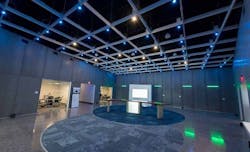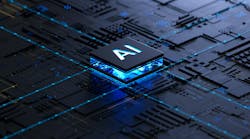Applying Open Source Strategies to the Data Center
In this edition of Voices of the Industry, Kirk Offel, Executive Vice President of Platform Delivery at Aligned Energy, explores the open source strategies and the importance of vendors’ participation in data center design, build, and operation and the power of the ecosystem to reduce cost, increase speed, and make the data center more adaptive.
Kirk Offel, Executive Vice President of Platform Delivery at Aligned Energy
In its early days, Microsoft’s then-CEO Steve Ballmer frequently was critical of open source software. Ballmer questioned whether its development did any more than clone commercial software. Was it for real? Was it a fad? Did it put businesses at risk?
It was not a fad at all, and open source methods have definitely produced work that is far beyond business quality. Over the past decade and a half, open source methodology has been responsible for cutting the leading edge in innovation. And today, open source models are moving beyond software. Using an open source method – a freely collaborative, iterative process with people creating things like software and hardware – is quickly offering opportunities for businesses of all kinds.
At Aligned Energy, we embrace open source methods for delivery. We engage the data center delivery ecosystem – clients, general contractors, engineers, subcontractors, and manufacturers – to develop the most efficient plan at every stage to deliver what the client needs.
The open source story is a story about the power of collaboration in spurring innovation. Beyond software, open source allows a tech organization to deliver the most efficient piece of technology in the most efficient way possible at the time. Using an open source methodology, harnessing the power of the ecosystem, lets us deliver innovation in real time. To be clear, when we talk about innovation in this context, we are talking about innovation in delivery, which means finding new ways to reduce cost, increase speed, and make the data center more adaptive.
Learning from the Tech Giants
For more than a decade, Microsoft continued to be very critical about the open source community. Now, 16 years later, 16,000 people across Microsoft are working on open source projects.
Microsoft joins a long list of tech giants who embrace the open source process for software and, to some extent, hardware development. Examples of how open source methods are part of the tech establishment include:
- Open Compute Project (OCP), a data center hardware initiative launched by Facebook, Intel, Rackspace, Goldman Sachs, and Andy Bechtolsheim in 2011 to “break open the black box of proprietary IT infrastructure.”
- Open19, developed by LinkedIn, is an open source data center hardware initiative designed for “operators of all sizes.”
- OpenStack, open source software for creating private and public clouds, is now eight years old and has an impressive list of users including AT&T, Walmart, eBay, China Railway, GE Healthcare, SAP, Tencent, and the Insurance Australia Group.
- OpenAI, a non-profit founded in 2015 by Elon Musk and Sam Altman to promote collaborative and open research and development of artificial general intelligence (AGI) to “ensure AGI’s benefits are as widely and evenly distributed as possible.”
- 331,000 organizations have employees contributing to open source projects on GitHub. Even the Pentagon has announced it hopes to start leveraging open source software.
“Without open source software, the entire internet as we know it would not exist,” says Google’s Chris DiBona, Director of Open Source. IDC predicts that by 2020 digital transformation teams will source more than 80 percent of their solution components from open source communities.
[clickToTweet tweet=”Kirk Offel – Open source methodology has been responsible for cutting the leading edge in innovation.” quote=”Open source methodology has been responsible for cutting the leading edge in innovation.”]
Power to the People
The beauty of open source is in the ecosystem of experts, specialists, and innovators who are sharing knowledge with each other, forging different routes to solve the same problem. At Aligned Energy, our approach is designed to meet continuously evolving future needs that cannot be predicted today.
Closed platform development limits an organization to the resources of its own R&D team. And it does organizations no good to give one person the job of staying ahead of the curve on everything involved in the delivery method for building data centers. This world is moving too fast for that. Businesses have embraced digital transformation in an effort to meet the needs of our anywhere, anytime customer-driven world. Until recently, innovation in software and hardware has dramatically outpaced innovation in the foundation of it all – the data center. But data centers, the infrastructure that supports the digital world, are being asked to support exponentially increasing and dynamic loads. And that demands that data centers borrow from the successful methodology used in open source software development.
That’s why we have shifted our delivery model – so we’re not dependent on single individuals or small teams. We’re looking to the strength of the ecosystem – clients, engineers, general contractors, subcontractors, and manufacturers – to deliver innovative methods in the most efficient ways. Once client reps and engineers outline what the client needs, we have a collaborative conversation with the larger ecosystem about the best ways to meet those needs.
Our standard delivery model allows for up to 1,000 watts per square foot. It’s 2N mechanical and N+1 electrical, and we can build in 7-9 months. But there are many cases where a client might want something different. We can do that and we’ll turn to the ecosystem to help us determine the most efficient way to make that happen today. Because the subcontractors and manufacturers are on the ground every day, working on their specific area of the data center – electrical, plumbing, both building and maintaining the systems – they are seeing in real time opportunities to deliver more efficiently and quickly.
[clickToTweet tweet=”Kirk Offel – Open source is neither a product nor a community. It’s a process and a mindset. #datacenters” quote=”Open source is neither a product nor a community. It’s a process and a mindset. #datacenters”]
Reducing Costs, Increasing Speed
Our resources are best spent if every time we want to build something, we find the best experts possible at that time and bring them into our fold. Again, when we talk about open source we’re talking about collaboration in the delivery process. We’re not changing the design; we’re optimizing the delivery.
As we’ve watched open source methodology move beyond software and even hardware design, we recognize the obvious next step is to leverage an open system of collaboration to identify the industry’s best practices in whatever location we are building.
Just as the ecosystem of open source software has grown stronger over time and delivered in ways that Steve Ballmer could never have imagined in 2001, using this methodology for delivery also has great promise. Our ecosystem grows stronger over time. And our clients benefit because as far as delivery is concerned, we are able to reinvent ourselves continuously.
But to be clear, open source is neither a product nor a community. It’s a process and a mindset. Across the board, an open source, or collaborative, strategy helps us solve complex problems while taking advantage of innovation in real time – to reduce cost, increase speed to capacity, and make the data center more adaptive.
Kirk Offel is Executive Vice President of Platform Delivery at Aligned Energy, an infrastructure technology company that offers colocation and build-to-scale solutions to cloud, enterprise, and service providers.


